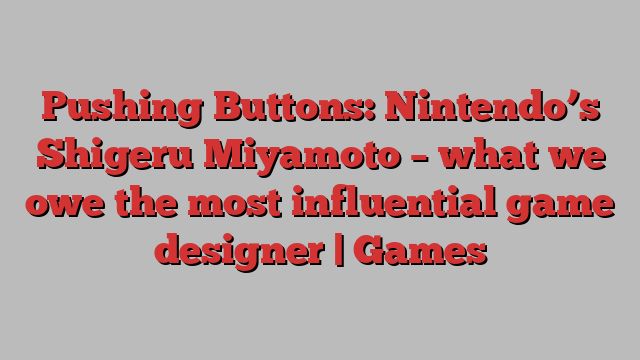
Nintendo’s designer Shigeru Miyamoto – one of gaming’s earliest superstar creatives, and the mind behind Super Mario Bros, Legend of Zelda F-Zero and many, many other wonderfully inventive games – has turned 70. Miyamoto, who has had a hand in the development of most Nintendo games and consoles, is the most influential game designer alive. Nintendo is part of the creative marrow of the games industry: there is barely a game developer today who has not played, and been influenced by, Miyamoto.
He has worked at Nintendo for 45 years and, since the 1990s, he has been the face of the company. Alongside the late, great former president Satoru Iwata, and the genius hardware designer and Game Boy architect Gunpei Yokoi, he laid the foundations for the company’s enduring success, and helped established its fun-first approach to video games. His smiling, familiar presence at events such as E3 and Tokyo Game Show over the decades – where he has always been happy to appear on-stage, waving around a Master Sword or a Wii Remote – has made him a beloved figure among the Nintendo faithful. He used to show up at midnight launches to sign things for fans; a friend of mine once asked him to draw a Mario doodle on his GameCube at a meet-and-greet, and he cheerfully obliged. He just seems like a really nice dude.
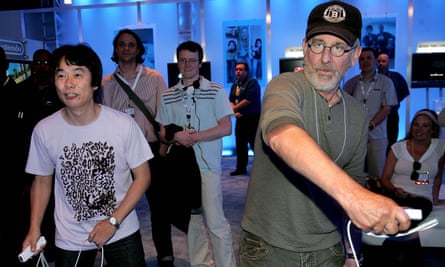
In my 17 years in the games industry, I have met Miyamoto only once. The first time I had the opportunity to interview him, in the late 2000s, my editor sent me on a press trip to Vienna instead. (I don’t think anyone has ever been so disappointed to be in Vienna.) I missed out on meeting him a second time, in Tokyo, because someone else from the publication I worked at got the jump on me. But in 2012 I finally met him, in Paris, right before the launch of the Wii U; I had a horrendous cold, barely made it through the flight and had to go to bed right after the interview. It is still one of the highlights of my career. He was unexpectedly quiet, a thoughtful listener and even more thoughtful speaker.
The hallmark of Miyamoto’s game design – and Nintendo’s more broadly – is understanding of how technology and ideas work together to create fun. There’ll be a cool idea: what if you could play a game on two different screens? What if you could swing the controller to play tennis? What if you could run this character around in 3D? Both the hardware and the game design will then follow that idea. Nintendo’s consoles are uniquely interconnected with its games. Nintendo Labo – a game that turns cardboard into playable toys, with the help of all the Switch’s cool little technical features like infrared sensors and vibration – is not a Miyamoto game, but it shows how that philosophy has filtered down through the entire company.
Technological innovation is also what prevents Nintendo’s decades-old franchises from becoming stale. They’re familiar, but there’s always something new – even groundbreaking – in another Zelda or Mario game. “We are often asked, ‘Another Pikmin, another Mario – why won’t you come up with brand new ideas and franchises?’,” Miyamoto told me in that 2012 interview. “But … even though we are creating a new iteration for the existing franchise, we are always trying to make unique entertainment, and one way to do this is to take new technologies and apply that so that even the existing franchise will be able to provide you with a brand new experience.”
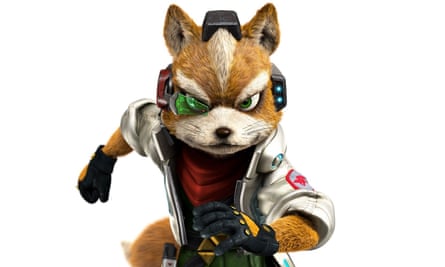
These days, Miyamoto is a background presence at Nintendo. When I interviewed the company’s senior creatives, Shinya Takahashi and Hisashi Nogami, a few years ago, they gave the impression that he lurks around the office, popping up to pass judgment or offer a rare compliment on a project in progress. “He is not involved in the minute details of development, but does oversee entire projects and identifies major issues: ‘This part is bad, this part is bad, this part is bad,’” Takahashi told me, with a grin. “If he says something’s good, it’s rare, and you know it is. He’s actually a shy person – even when he thinks something is well done, he would not often say that to someone directly.”
“I have never once been praised by Mr Miyamoto,” Nogami interjected, deadpan. Evidently he’s a difficult man to please.
I’m not sure Miyamoto will ever actually retire. He’s too much of a creative mascot for Nintendo, too much of a symbol for what makes the company what it is, and he clearly still enjoys his work: most recently he’s been overseeing the forthcoming Mario movie. He also – like me, really, and I’d wager like many of you – refuses to grow out of video games, because he sees them as something life-enhancing, something that will always have a place.
“Sometimes people say, ‘I have graduated from video games.’ But I do not think this is an appropriate term. This unique interactive media called video games can be very conveniently integrated into your ordinary life, and my hope is that I can work on making ways to play games which can attract people – to encourage them to play with video game technologies one way or another, so they can even more enjoy their lives.”
I believe that few people alive today could say that they’ve brought more happiness to more people than Shigeru Miyamoto has, through his games and his influence. Happy birthday, Miyamoto-san. Here’s to many more.
What to play
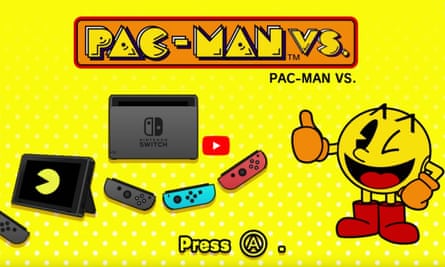
I recommend a real Miyamoto deep cut: Pac-Man Vs. Released for the GameCube in 2003, and only playable by linking a Game Boy Advance to the console via a cable, it takes the Namco classic and gives it an inspired twist: one player controls Pac-Man and three others control the ghosts. The result is a riot. A collective shriek goes up every time the Pac-Man player finds a Power-Pill, rivalries and alliances form and dissolve, and everybody has a great time.
With its fun-first approach and dual-screen technical inventiveness, I think this game is a wonderful example of Miyamoto’s way of looking at game design. It was created to show off the possibilities of dual-screen games, and its central idea has appeared in plenty of titles since throughout the DS, Wii U and Switch era, most notably in Nintendo Land’s Mario Chase. These days Pac Man Vs can also be played on Nintendo DS and Switch, via Namco Museum.
Approximate playtime: Only a few minutes per game
Available on: GameCube, Nintendo DS, Nintendo Switch
What to read
-
Pokémon Scarlet and Violet, the most ambitious entries in this long-running series for years, have released in a bit of a state, with shockingly poor technical performance and bugs marring the experience for many players. This has sparked the usual tedious discourse about its developer, Game Freak, which has been struggling with the move from 2D handheld-console game design to modern open-world structures for a long time, whilst still releasing one or two games every year. What Game Freak most likely needs is not more people, or “better” talent, but more time: a cake takes the same amount of time to make no matter how many cooks are involved.
-
If you’re as fascinated as I am in the terrible behaviour of Elon Musk during the ongoing convulsions at Twitter, read this piece by Ed Zitron (who used to be a games writer).
-
Saints Row developer Volition is to be made part of Gearbox Studios, after the reboot of its irreverent crime series under-performed according to new owner Embracer Group’s expectations.
-
An NFL linebacker has retired from the sport at the age of 28 to apparently sell Pokémon cards instead, having recently sold an infamously rare Illustrator card for $650,000. Good on him – Pokémon cards are significantly less likely to give you brain damage than American football.
What to click
Scholars, symphonies and rave music: making the Assassin’s Creed soundtrack
Pokémon Scarlet/Violet review – poor performance holds an exciting game back
Sonic Frontiers review – wild, weird and a bit broken
Question block
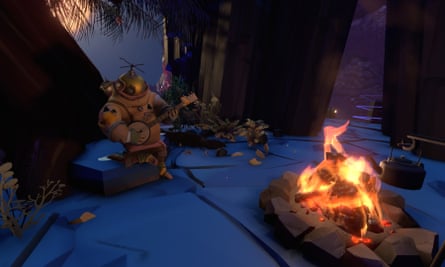
Today’s question comes from reader Adam:
I recently finished In Other Waters on Switch. One of the things that struck me about the experience was the clunky user interface. I enjoyed the sense of resistance and learning to wrangle the controls. What control schemes have, by design or by accident, have enhanced your game experience?
I could write a whole column on bad controls that are actually good, from the early Resi games’ slow tension-ramping on-the-spot pivoting to Octodad’s intentionally slipperly controls, which have you incompetently manoeuvring an octopus in a suit around a supermarket. Often, idiosyncratic controls are used intentionally for comedic effect. In time-loop space game Outer Wilds, however, the difficult-to-wrangle controls of my rickety spaceship gave another dimension to the game’s sense of wonder. Unlike the zippy flying machines of Star Wars or, indeed, Star Fox, it’s hard to land and hard to fly without bumping into things. As you learn to wrestle with your spaceship, you also learn more about the game’s enticing capsule solar system as its mysteries start to open up to you.
If you, like Adam, have thoughts about bad controls that are actually good or have a question to ask, email me at [email protected].